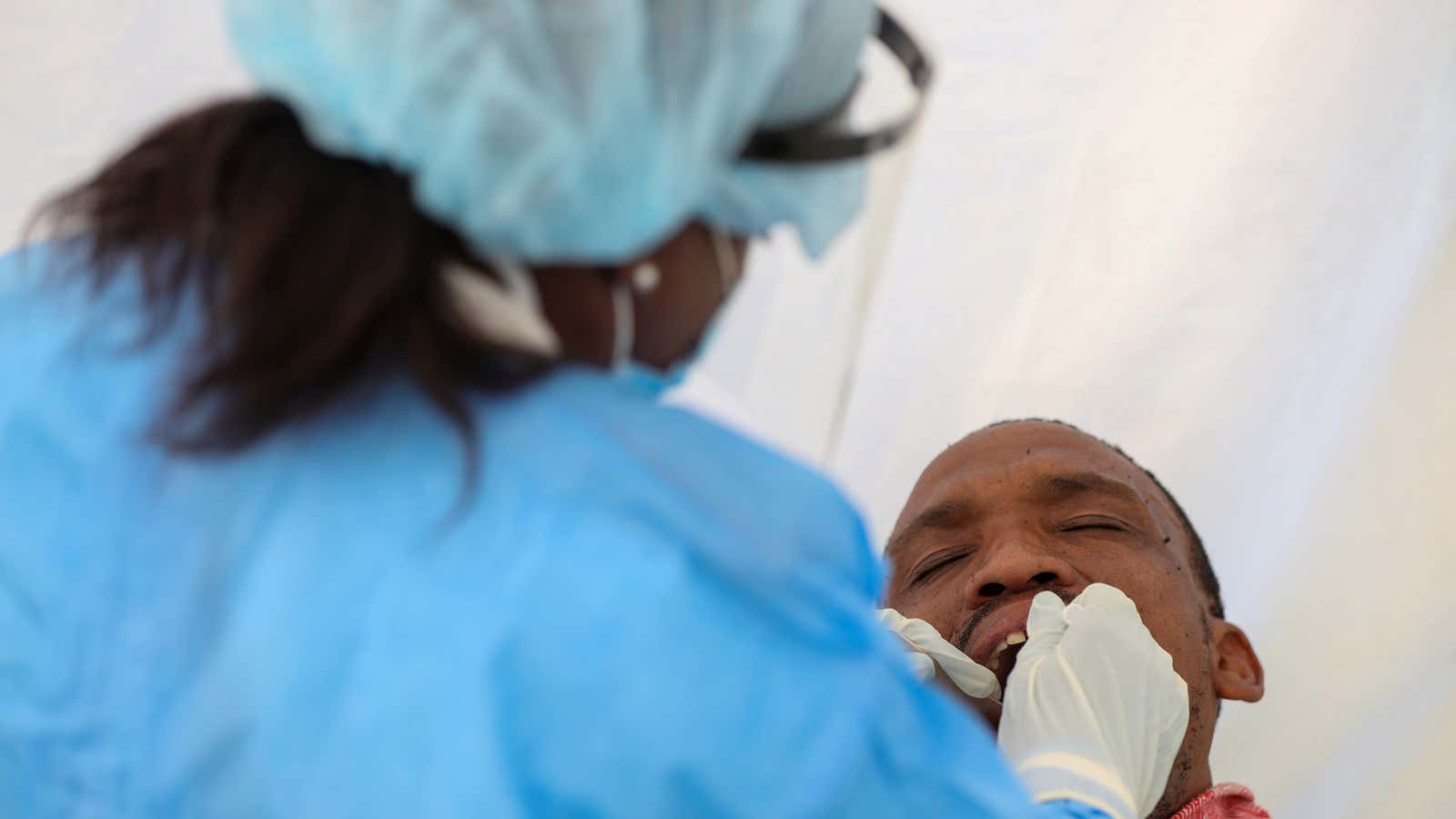As the spread of the novel coronavirus in South Africa builds toward a projected peak in the coming weeks, the epicenter of the pandemic is shifting to Johannesburg from Cape Town, leading officials in the country’s largest city to redouble their analysis of data as part of efforts to pinpoint a public-health response.
Researchers at the University of Witwatersrand have teamed with scientists at IBM, the University of Pretoria, and officials in surrounding Gauteng province to build a dashboard designed to bridge the gap between the tracking of Covid-19 at the provincial level and the spread of the virus among people who are most at risk of infection.
The dashboard, which draws on demographic data that is stripped of personally identifying information, “goes down to the ward level, which is rather remarkable,” says Toby Kurien, a research engineer with IBM Research in Johannesburg who helped build the visualization and interface for the tracker.
Time is of the essence. Gauteng, the most densely populated of South Africa’s nine provinces, is on course in coming days to become South Africa’s Covid-19 hot spot, with nearly twice the number of active infections (35,166 as of Wednesday ) as the Western Cape province, which has logged the most confirmed cases overall.
South Africa, with nearly 160,000 confirmed cases of coronavirus as of Thursday, accounts for the 17th-most cases world-wide and roughly half of the nearly 316,000 confirmed cases of Covid-19 across the continent. According to one estimate, as many as 380,000 people in Gauteng alone could test positive by August.
In addition to scaling up nationwide testing and contact tracing, the South African government has spent weeks racing to assemble quarantine facilities, hospital beds, and ventilators across the country.
South Africa is also the first African country to start trialing a possible coronavirus vaccine.
The push comes as surveys suggest that by September the country may need as many as 10 times the roughly 3,000 intensive-care beds that were available nationwide at the end of May. While South Africa is Africa’s most advanced economy, with a better health system than most of Sub Saharan Africa, it still lags high-income countries in the number of physicians who specialize in critical care.
Officials in Gauteng have used the Wits-IBM dashboard for several weeks to visualize the spread of Covid-19 as the diease moves through communities. Their hope: to direct attention to areas that are home to concentrations of older people who are most at risk from the virus and to districts full of densely packed houses.
They also are using the dashboard to model transmission of the coronavirus under varying versions of a nationwide lockdown instituted in March. An analysis by researchers at Wits published in May concluded that removing lockdown restrictions too swiftly would result in the resurgence of spread within one to two months.
“This engine can give officials the appropriate instruments of estimating how many beds and ventilators will be needed at the peak of the wave based on level of alert,” Kurien says.
Though South Africa has continued to loosen a nationwide lockdown imposed in March, officials in Gauteng said this week that the province could close again for intervals designed to slow the spread of infection.
Sign up to the Quartz Africa Weekly Brief here for news and analysis on African business, tech and innovation in your inbox
